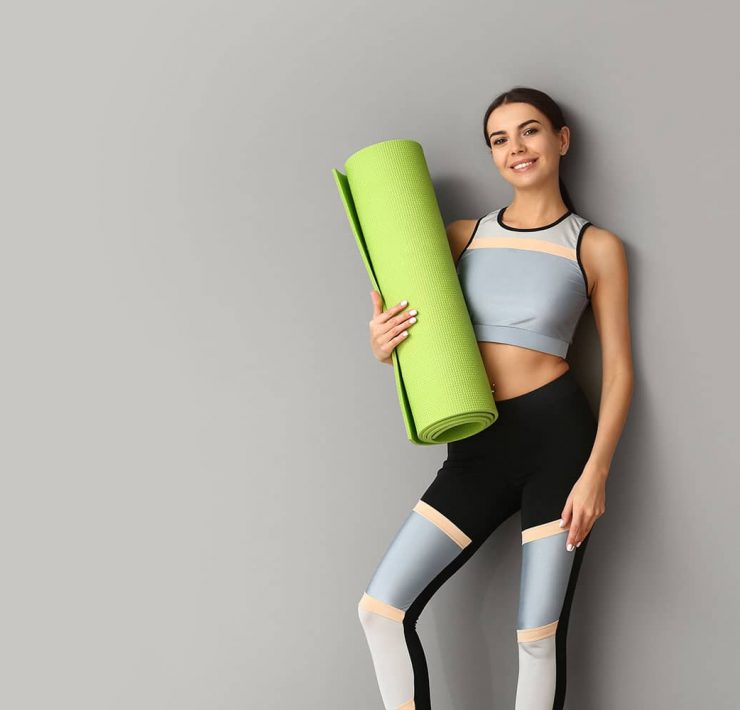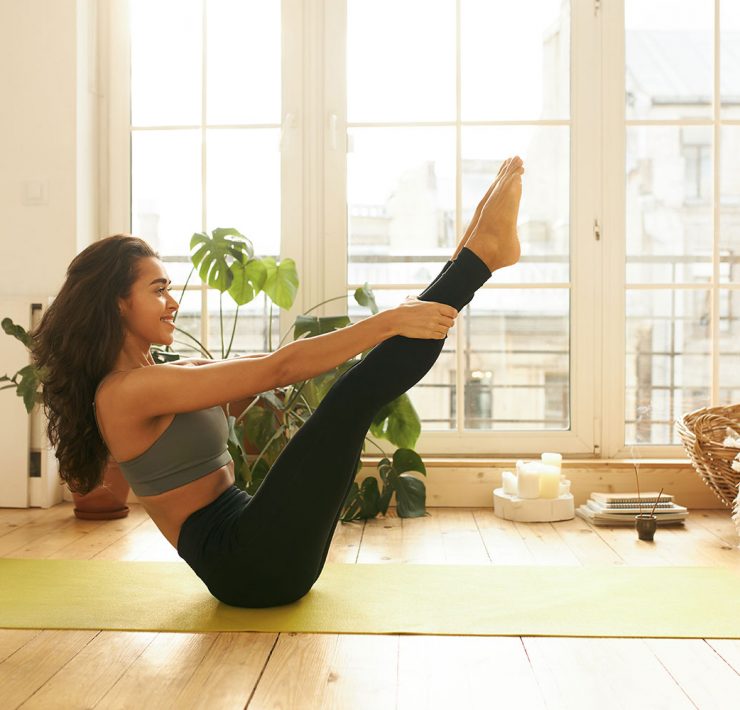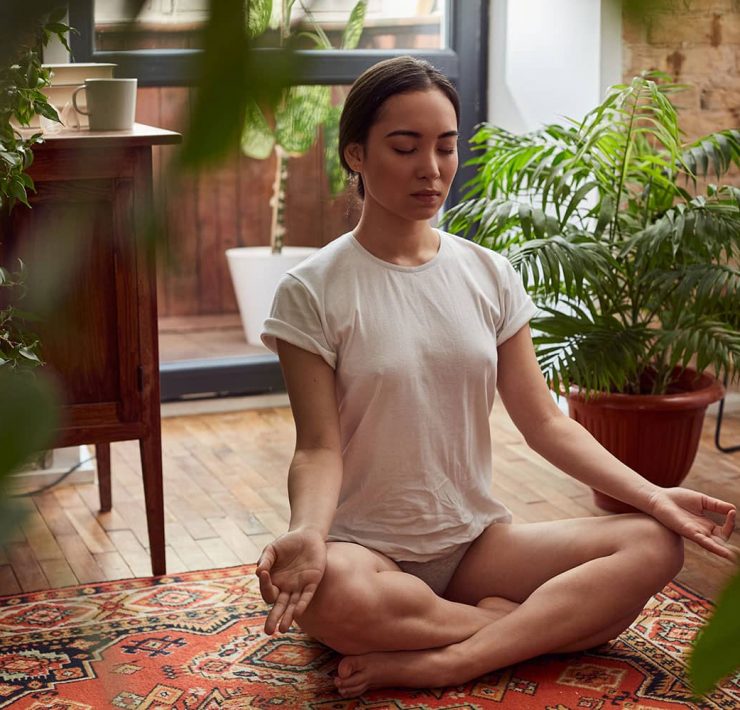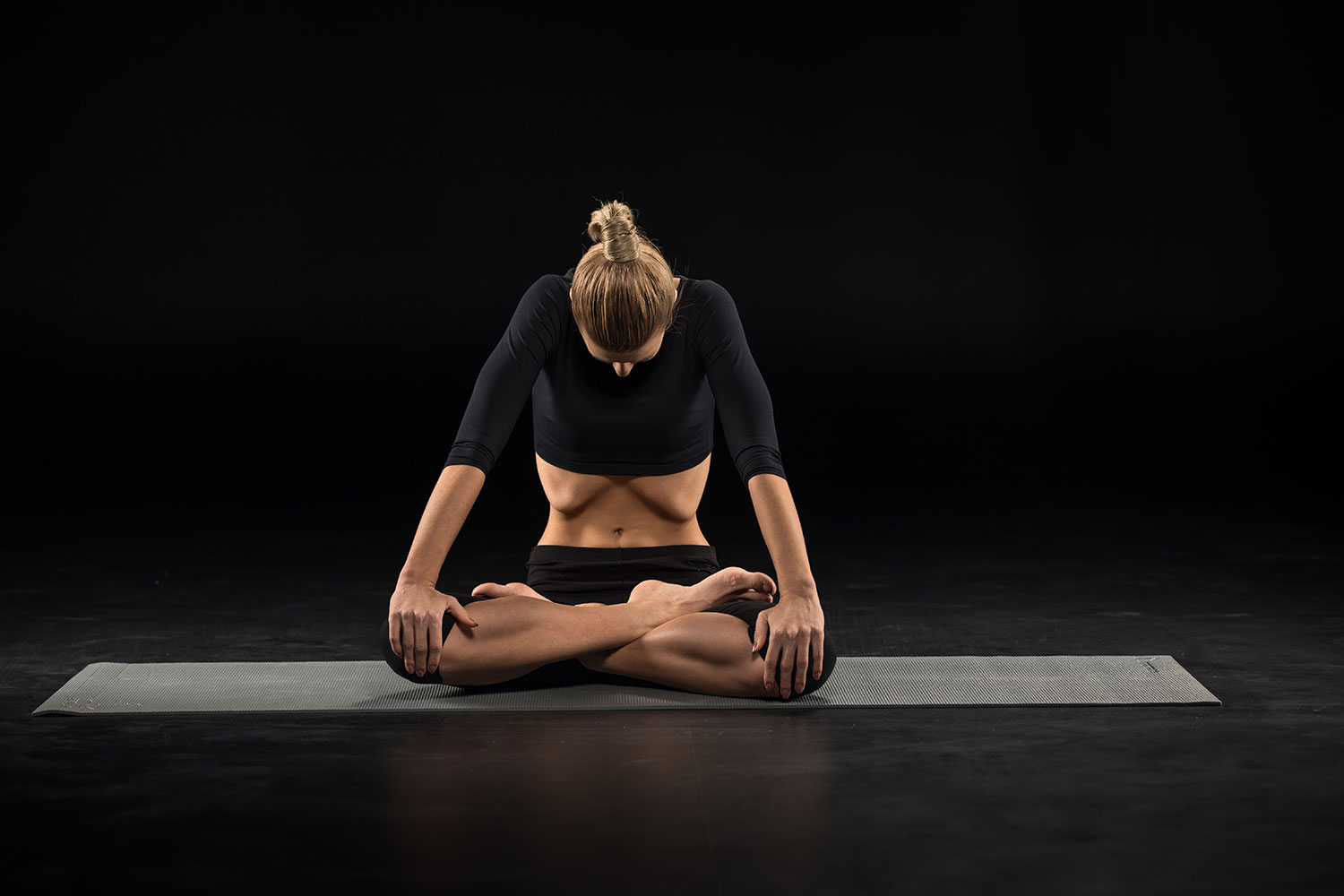
Meditation coach Emma Morrison is the go-to person for those…
In your hatha yoga practice, you may have heard about the bandhas. Banda, or lock, is a gesture in which a segment of the body is sealed or constricted.
One of the most powerful locks is the Uddiyana Bandha.
To practice Uddiyana Bandha, suck your abdominal wall in and up after you exhale. Continue to hold this position while restraining your breath. The abdominal organs will be swept up to a higher than normal position.
On an empty stomach, Uddiyana Bandha is pleasurable and invigorating. It is also the safest form of breath retention as it creates a vacuum in the chest. Other forms of breath retention rely on additional pressure.
Uddiyana Bandha is also called Upward Flying Lock.
It is an essential exercise for one’s health, wellbeing, and energy flow.
This exercise helps the digestive organs, massages the solar plexus and abdominal muscles, and releases tension and toxins. It also stimulates blood flow and strengthens the abdominal muscles.
If you’re looking to activate your energy flow, Uddiyana Bandha is the perfect practice for you.
What is “Bandha”?
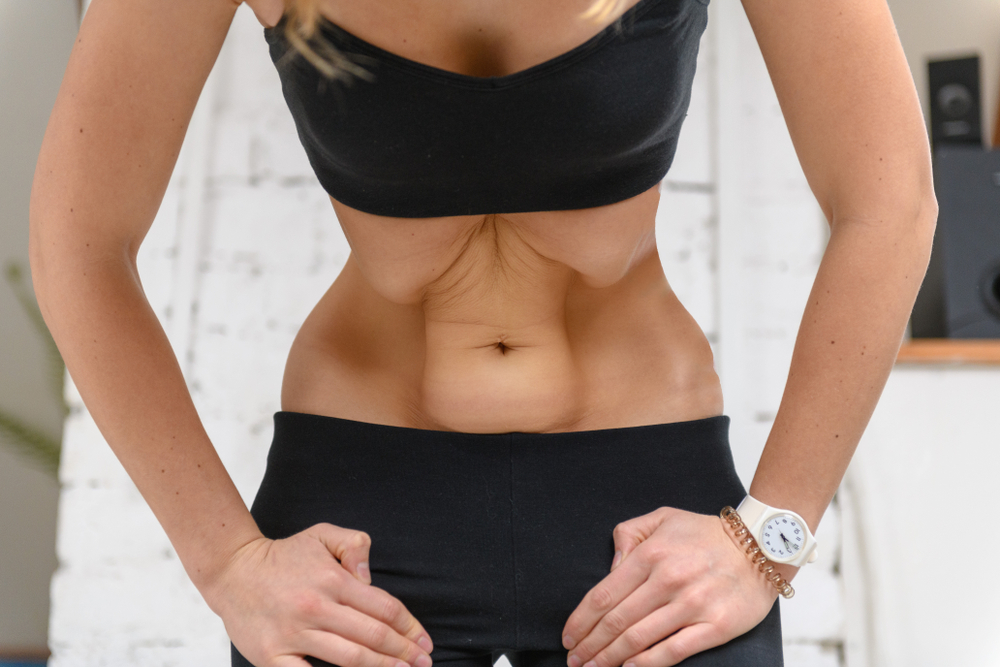
Bandas are locks or bonds. They are essential to yoga and pranayama practices. They can help stimulate one’s energy and cleanse energy channels in the body.
To recap, below are the four key locks:
- Mula Bandha – the Root Lock
- Jalandhara Bandha – the Throat Lock
- Uddiyana Bandha – the Abdominal Lock
- Maha Bandha – the Great Lock (includes doing all three locks at the same time)
Each bandha provides unique benefits for one’s practice. But Uddiyana Bandha is considered the most advanced technique. It is best practiced after mastering Mula Bandha and Jalandhara Bandha. When done appropriately, Uddiyana Bandha can be one of the most powerful foundational poses.
Uddiyana Bandha will take your yoga practice to the next level.
Benefits of Uddiyana Bandha
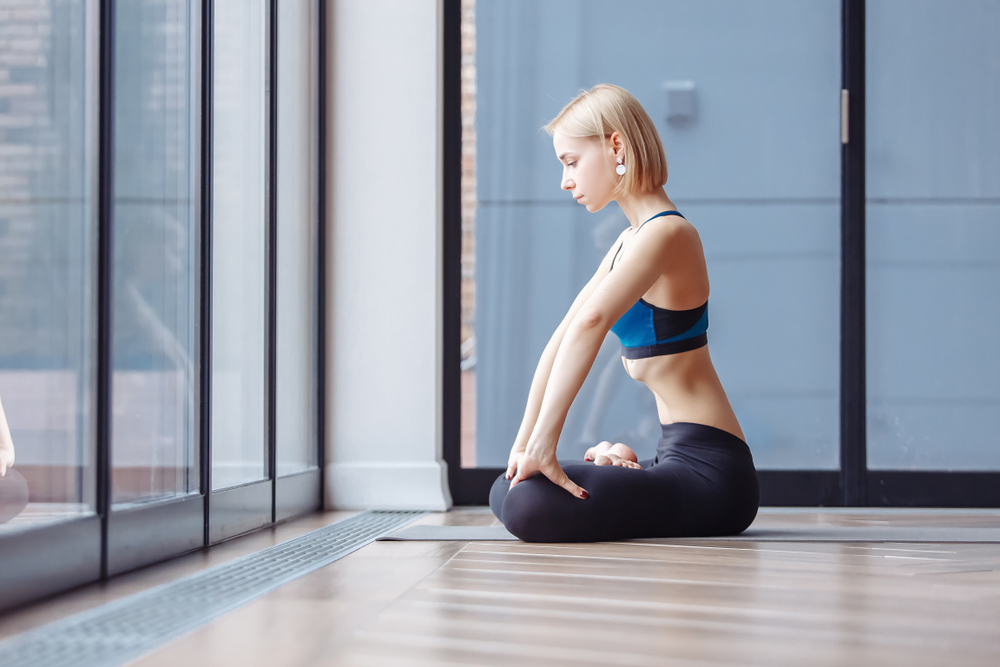
The Uddiyana Bandha is an active engagement of the abdominal muscles. This tones and creates space for the abdominal organs as the diaphragm is drawn upwards. Toning and lifting the organs enables yogis to fly easily into inversion poses. This way, yogis do not have to muscle through inversion practice and risk getting injured.
Uddiyana Bandha is also specifically useful for lowering blood sugar levels. It relieves constipation as it stimulates the intestines. And it acts as an excellent remedy for irritability and temper. Creating a vacuum in the chest improves circulation to the abdominal organs.
On an energetic level, Uddiyana Bandha reverses the flow of Apana.
It enables pranic energy to move upwards. If you perform this concurrently with Jalandhara Bandha, prana and Apana energy will meet at the solar plexus.
Most of all, Uddiyana Bandha awakens and improves the functions of all organs.
It is the only practice in hatha yoga that stretches the respiratory diaphragm. Exhaling as much as possible will push the dome of the diaphragm to the highest possible position. This will stretch the muscle fibers and connective tissues.
When practiced regularly, Uddiyana Bandha will allow you to exhale more completely and breathe more comfortably and efficiently.
Preparatory Poses for Uddiyana Bandha
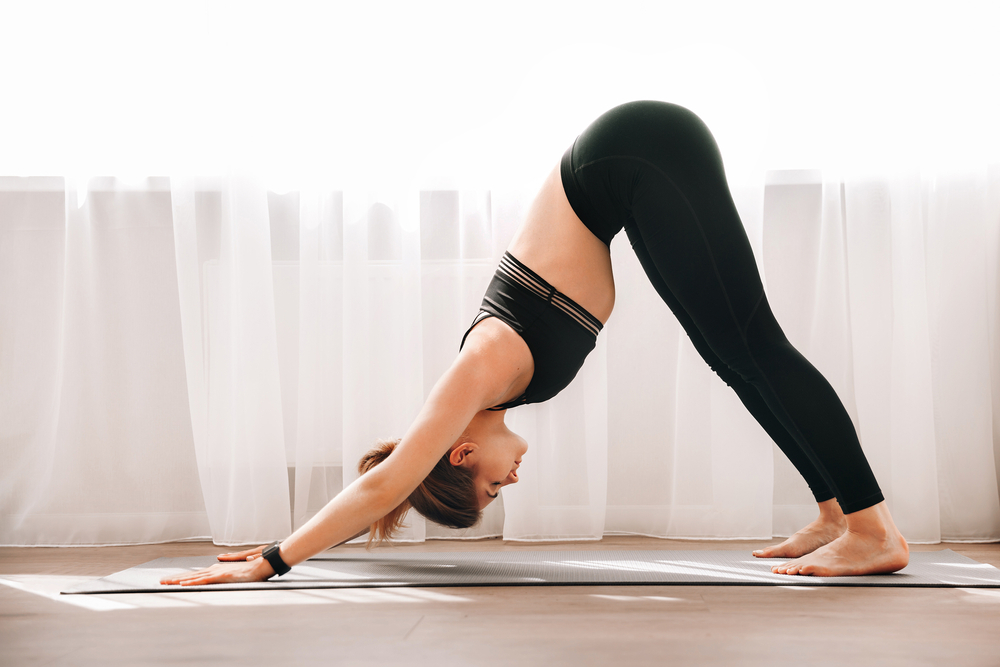
Before you attempt Uddiyana Bandha, try these postures. These poses will allow you to activate the right muscles.
- Dandasana – Staff Pose
- Baddha Konasana – Bound Angle Pose
- Paschimottanasana – Seated Forward Bend
- Virasana – Hero Pose
- Viparita Karani – Legs Up the Wall
- Adho Mukha Svanasana – Downward Facing Dog
- Sarvangasana – Shoulder Stand
- Supta Virasana – Reclining Hero Pose
- Sirsasana – Headstand
Once you feel comfortable with these postures, follow the steps below to practice Uddiyana Bandha.
How to do Uddiyana Bandha
For Beginner Yogis

Start by standing with your feet a little bit wider than hips-width. You may stand against a wall for additional support should you need some. Inhale deeply through your nose and reach your arms up overhead. Bring your hands to your thighs and bend your knees.
As you press your hands on your thighs, curve your back as in Cat Pose. Exhale quickly and completely to stretch the diaphragm to its most expanded position. At the end of your exhale, straighten your arms. Suck in your belly and pull it up into your spine.
Once you have pulled your belly in as much as possible, start pulling it up into the ribcage. Do a “mock inhalation” by expanding the rib cage as if you are inhaling. But do not actually inhale.
This action pulls up the abdominal muscles and viscera into the thorax. It hollows the belly and slowly lifts the abdominal organs.
Hold this for as long as you can without breathing further. When you can hold no further, inhale through your nose, stand up, and extend your arms up overhead. Exhale to bring your arms back down and abdominals back to their neutral position.
As a beginner, it may be difficult to maintain the proper contraction of the abdominal muscles. But with practice, you can extend your hold for up to 2 minutes or more. To slowly progress your practice with Uddiyana Bandha, try straightening your back.
For Intermediate Yogis
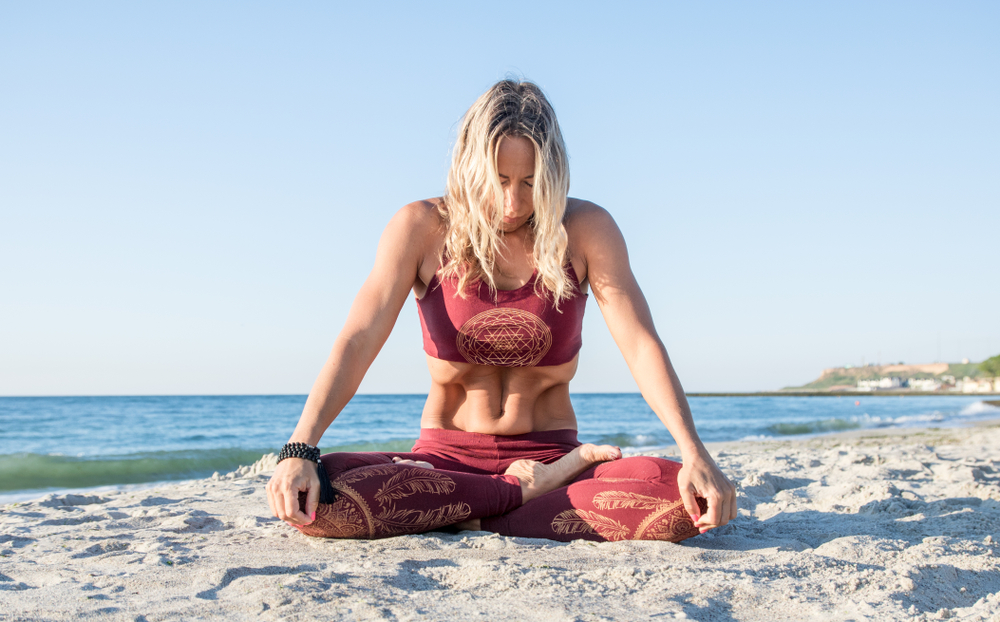
Once you’ve mastered Uddiyana Bandha while standing, try performing it seated. Sit in a comfortable meditative position in a cross-legged pose or in Lotus Pose. Keep a straight spine while placing your palms on your knees. Your knees should be stretched outwards, firmly touching the floor.
Close your eyes and breathe normally. Feel your body relaxing as you start to breathe slower and deeper.
Perform Jalandhara Bandha. Inhale deeply and raise your chest. Hold your breath for 10 seconds. Contract your throat muscles and push your head and neck towards your chest.
Now perform Uddiyana Bandha. Contract your abdominal muscles and pull them in and up towards the ribcage. It should feel like a vacuum just behind the breastbone or sternum.
This will enable your abdomen to go fully inside, pressing your organs against the spine.
Hold both of these locks with breath retention for as long as you can. Then release and return to your starting point.
If you have mastered all three bandhas, you may wish to practice them together to achieve Maha Bandha. Start with Mula Bandha, then Uddiyana Bandha, and finally Jalandhara Bandha.
Final Thoughts on Uddiyana Bandha
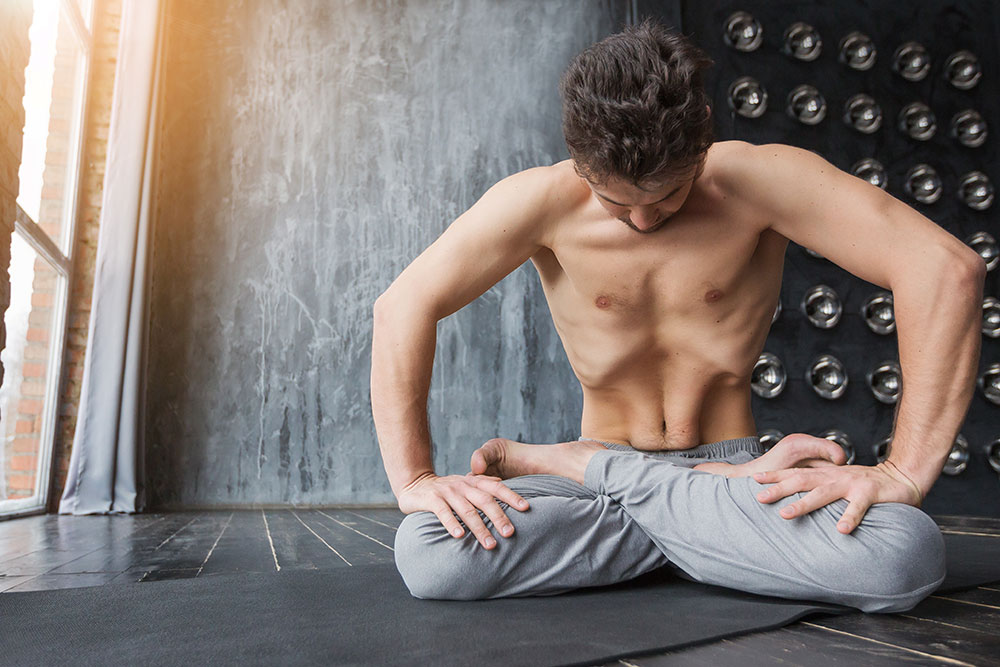
Practicing Uddiyana Bandha early in the morning can be very energizing. It will help the abdominal organs warm-up for the day ahead. It is also helpful in keeping you calm and centered throughout the day.
Bandha practices are an amazing way to connect with the mind and body.
Uddiyana Bandha is one of the most important practices in hatha yoga. The abdomen is the seat of power in the body. It is also the locus for the Third Chakra.
As the abdomen lifts, it transmits power to high centers, including the heart and upper extremities. In this way, you are lovingly giving your work and talents to the world.
This energy to your head and neck will empower your sense of direction and leadership. The final goal of Uddiyana Bandha is to exist beyond the realm of the body and mind.
But don’t be hard on yourself. This practice takes time to master. Be sure to go over the preparatory poses so that you do not injure yourself. Trust in the process and work on strengthening, not straining.
Uddiyana Bandha is first and foremost a way to connect with your inner power. Since it focuses on the abdomen and the Third Chakra, it will encourage you to connect with your inner voice. This Flying Upward Lock will allow you to explore yourself in ways you never have. But again, allow yourself to process this information rather than diving right into the practice.
By honoring your process, you honor your power. Since it is one of the most important practices in yoga, it is important to work up to it. Don’t worry if you don’t get it right on the first try. That is why it is called a practice.
What's Your Reaction?
Meditation coach Emma Morrison is the go-to person for those living in Salt Lake City, Utah, who need to release stress and tension or simply dive deeper into their meditation practice. In her writing, you’ll receive useful information on how to live a more fulfilling life.









